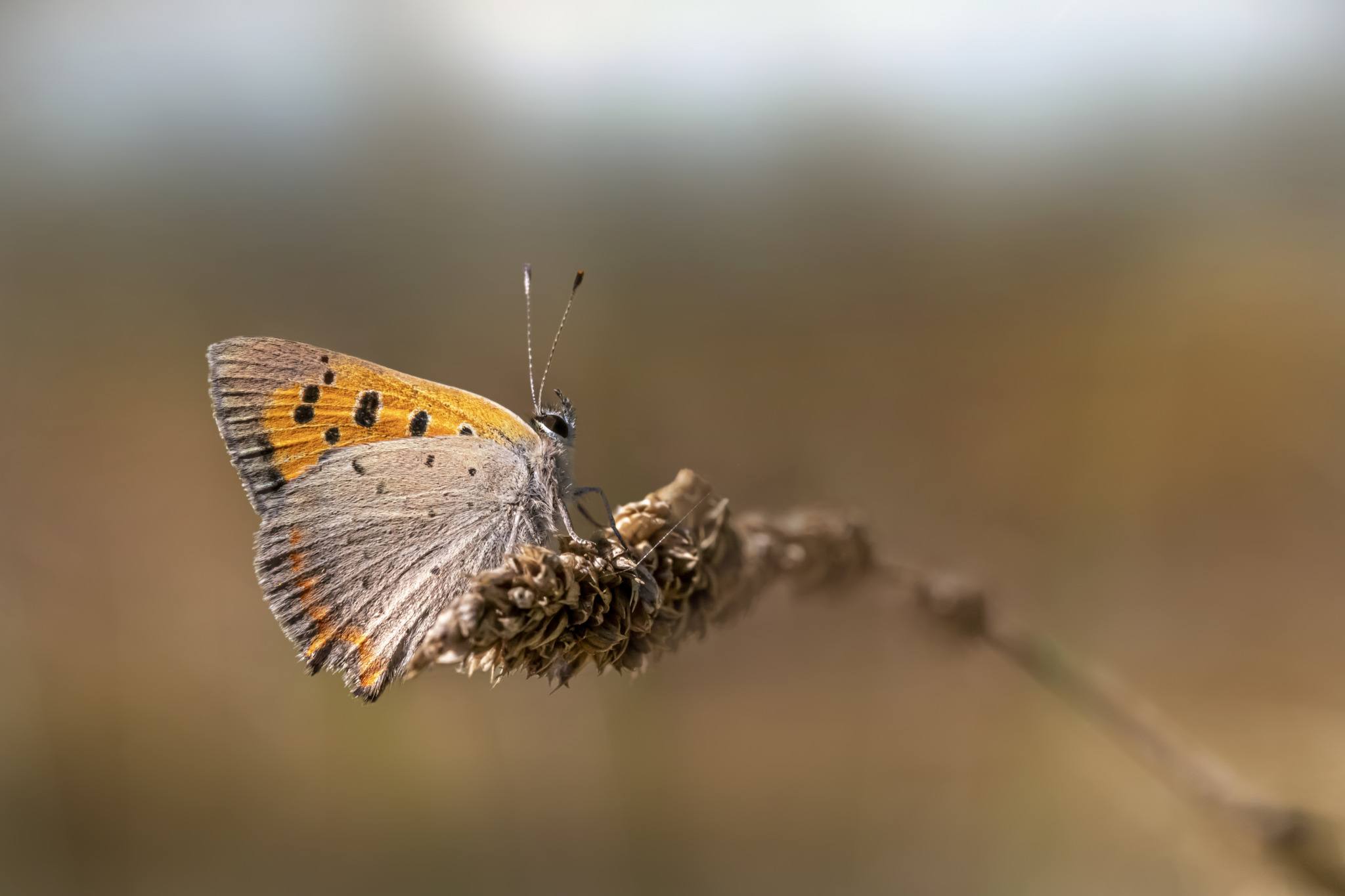The Small Copper (Lycaena phlaeas) is a striking and widespread butterfly species belonging to the family Lycaenidae. Here are some key characteristics and facts about the Small Copper:
- Appearance: Small Copper butterflies are relatively small, with a wingspan ranging from 2 to 2.5 centimeters (about 0.8 to 1 inch). They are named for the coppery-orange coloration on the upper side of their wings, which is accented with dark markings and a black border. The undersides of their wings are typically a mottled gray or brown with orange spots and black markings.
- Habitat: Small Copper butterflies can be found in a variety of open habitats, including meadows, grasslands, heathlands, scrublands, and open woodland edges. They prefer areas with abundant nectar-producing flowers and suitable host plants for their caterpillars.
- Range: Small Copper butterflies have a wide distribution across Europe, North Africa, and parts of Asia. They are also found in some parts of North America, where they are known as the American Copper (Lycaena phlaeas).
- Life Cycle: Like other butterflies, Small Copper butterflies undergo complete metamorphosis, with four distinct life stages: egg, larva (caterpillar), pupa (chrysalis), and adult. The caterpillars feed on various species of plants in the dock family (Rumex spp.), including sorrel and sheep’s sorrel.
- Behavior: Small Copper butterflies are typically active from spring to autumn, with multiple generations produced each year in warmer regions. They have a rapid and erratic flight pattern and can often be seen basking in the sun with their wings open to absorb warmth.
- Feeding: As adults, Small Copper butterflies primarily feed on the nectar of a wide range of flowering plants, including thistles, knapweeds, dandelions, and other wildflowers. They use their long proboscis to reach deep into the flowers to extract nectar.
- Conservation: While the Small Copper is not considered globally threatened, certain populations may be vulnerable to habitat loss, degradation, and climate change. Conservation efforts aimed at preserving and restoring their native habitats, including the maintenance of wildflower-rich meadows and grasslands, are crucial for their long-term survival.
Overall, the Small Copper is a beautiful and charismatic butterfly species that contributes to the biodiversity and ecological functioning of the habitats it inhabits.
Views: 54
Subscribe to the newsletter:
